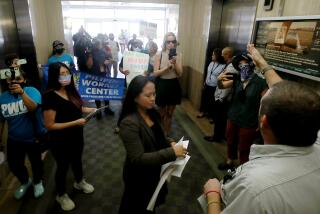Welfare Fraud Study
Your April 26 article on the recent study examining welfare fraud in Orange County suggests that California officials may be misguided in cracking down on welfare fraud. Nothing could be further from the truth.
The fraud rate for all Aid to Families With Dependent Children cases is not “only about 4%”; that number refers to the amount of fraud detected through the quality-control process, a system designed primarily to find errors by welfare officials, not fraud. The truth is, since 1970, a range of studies have put the rate of welfare fraud anywhere from 10% to 100%.
To get a better estimate of welfare across the entire AFDC population, the state will conduct additional studies. Even if the fraud rate is only 4%, the cost of fraud in all welfare programs is a staggering $750 million every year. Given that efforts to fight welfare fraud are extremely cost-effective ($28 in savings for every dollar invested), it’s wise to step up our efforts now.
As for the Orange County study, we stand by it. It made sense for us to look at highly suspicious cases like the ones examined in Orange County, in which adults denied working but claimed they were supporting their families on a welfare grant intended for one person. We anticipated a high level of fraud, but what we found exceeded all of our expectations.
The facts are hard to impugn: Fraud was discovered in 62% of the cases investigated at a cost of millions of dollars to taxpayers. It doesn’t mean that fraud is 62% statewide; we’ve never maintained that it did. It does mean that welfare fraud may be a greater problem than we ever imagined.
ELOISE ANDERSON, Director
Department of Social Services, Sacramento
More to Read
Sign up for Essential California
The most important California stories and recommendations in your inbox every morning.
You may occasionally receive promotional content from the Los Angeles Times.










